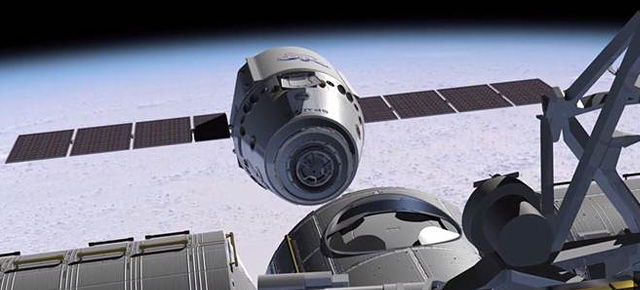Private Company Delays 1st Launch to Space Station to May 19

The private spaceflight company SpaceX has once again postponed the launch of its first commercial Dragon space capsule bound for the International Space Station, this time to May 19, to allow more time to complete final checks on the spacecraft's rocket.
The new launch date, announced today (May 4), is the latest delay for SpaceX, which initially hoped to loft the Dragon capsule on its debut trip to the space station on April 30. Last week, the Hawthorne, Calif.-based company delayed the launch to May 7 to allow more time for flight software checks. Yesterday, SpaceX officials said the May 7 date was unlikely, but kept open an option for a May 10 liftoff.
"SpaceX is requesting a May 19th launch target with a backup on May 22 from the Cape Canaveral Air Force Station," SpaceX officials announced in a Twitter update today.
The latest delay pushes the Dragon launch well into May, meaning it will launch on the heels of a Russian Soyuz spacecraft carrying three new crewmembers to the International Space Station. That Soyuz spacecraft will blast off from Kazakhstan on May 14 and arrive at the space station on May 17. NASA astronaut Joe Acaba and Russian cosmonauts Gennady Padalka and Sergei Revin ride the Soyuz to the station to join three other crewmates already aboard.
The repeated delays to Dragon's liftoff have been prompted by the need for more checkouts of the vehicle and its Falcon 9 rocket. The first private spacecraft's visit to the orbiting laboratory is a milestone event, and neither NASA nor SpaceX wants to risk damaging the $100 billion outpost.
"After additional reviews and discussions between the SpaceX and NASA teams, we are in a position to proceed toward this important launch," said William Gerstenmaier, NASA's associate administrator for Human Exploration and Operations. "The teamwork provided by these teams is phenomenal. There are a few remaining open items but we are ready to support SpaceX for its new launch date of May 19."
Engineers are reportedly doing final tests of Dragon's docking software to iron out the wrinkles in its plan to join up with the space station. Three days after launching, Dragon is due to come within range of the station, then be grabbed by the laboratory's robotic arm, which will be controlled from inside by astronauts Don Pettit of NASA and European Space Agency spaceflyer Andre Kuipers.
SpaceX also conducted a static test firing of the Falcon 9's rocket engines April 30. After an initial hiccup, the test went through successfully on the second try.
Breaking space news, the latest updates on rocket launches, skywatching events and more!
"Woohoo, rocket hold down firing completed and all looks good!" SpaceX founder Elon Musk tweeted after the event.
SpaceX engineers are still reviewing data from the test, company officials said.
SpaceX, officially known as Space Exploration Technologies, has a NASA contract worth $1.6 billion to fly 12 unmanned cargo-delivery missions to the space station, under the agency's Commercial Orbital Transportation Services program. The upcoming flight is a demonstration mission to prove out the vehicle before those ferry flights take place.
Eventually, SpaceX plans to outfit Dragon to carry up to seven crewmembers to orbit. NASA hopes to use the vehicle to carry not just cargo, but astronauts, to the station in the wake of the space shuttles' retirement last year.
You can follow SPACE.com assistant managing editor Clara Moskowitz on Twitter @ClaraMoskowitz. Follow SPACE.com for the latest in space science and exploration news on Twitter @Spacedotcom and on Facebook.

Clara Moskowitz is a science and space writer who joined the Space.com team in 2008 and served as Assistant Managing Editor from 2011 to 2013. Clara has a bachelor's degree in astronomy and physics from Wesleyan University, and a graduate certificate in science writing from the University of California, Santa Cruz. She covers everything from astronomy to human spaceflight and once aced a NASTAR suborbital spaceflight training program for space missions. Clara is currently Associate Editor of Scientific American. To see her latest project is, follow Clara on Twitter.
